IGUANAS
 ブルーイグアナ |  アルビノイグアナ |
|---|---|
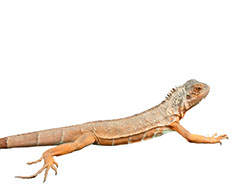 レッドイグアナ | 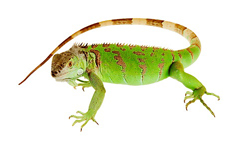 グリーンイグアナ |
イグアナケアシート
サイズ:大人のイグアナの長さは4〜6フィートの大きさの範囲.
寿命:適切に世話をした場合、イグアナは飼育下で20年以上生きるべき.
一般的な外観:イグアナは、ほとんどの人は、彼らが考えるときについて考えるものです「トカゲ」。彼らはそれぞれ徒歩5つま先を持っています。彼らはのど袋と呼ばれる顎の下の皮膚の肉質フラップを有します。すべてのイグアナは、バックの長さを実行して棘を持っています。人気の信念に反して、すべてのイグアナは緑色ではありません。ほとんどの少年は明るい緑色ですが、彼らは、年齢と成長するにつれて、彼らはストライプ尾と鈍い緑色から茶色、あるいはオレンジ色の範囲であり得ます.
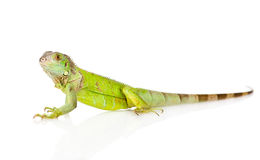
住宅の要件
エンクロージャ:大人のイグアナのためのエンクロージャは非常に大きいです。エンクロージャは、約1、少なくとも6フィートでなければなりません
温度:イグアナが熱帯気候から来て、保温する必要があります。日中の気温は80でなければなりません.
熱/光:紫外線照明提供UVAとUVBは、適切なカルシウム代謝と骨格の発達のために必要とされます。適切な照明がなければ、あなたは病気になると非常に痛みを伴う死を死にます。適切な照明は、特に爬虫類ならびにも同様にいくつかの熱を提供する水銀灯で使用するために作られた蛍光管を利用して提供することができます。追加の熱は、赤外線セラミックエミッタ及び白熱電球日光浴を利用提供することができます。彼らは深刻なイグアナを書き込むことができ、ホット岩がどのような状況下で使用すべきではありません.

基質:イグアナは、多くの場合、舌はその周囲をなめるます。この最も粒子状基板(木屑、腐葉土、砂、または粉末タイプ)のほとんどのイグアナには適していませんので。非毒性インク、肉屋紙、紙タオル、屋内/屋外のカーペット、または人工芝での新聞のすべては、優れた選択を行います。屋内/屋外のカーペットや人工芝を使用している場合は、あなたのイグアナの爪にもつれ可能性が全くぶら下がり文字列がないことを確認してください。また、あなたがきれいなセットで汚れの作品を交換してから、清潔で次の洗浄に使用する現在のセットを消毒することができるようにあなたが複数の部分を持っていることをお勧めします.
Environment: Iguanas come from a tropical climate and require a humidity level of 65% to 75%. To achieve this may require several misting’s a day. Many people opt to purchase an automatic misting system instead.
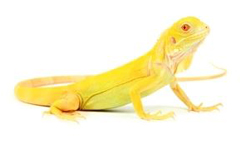
Diet: Iguanas are strict herbivores. Many older literatures will suggest feeding animal protein or even cat food. While some wild iguanas may ingest the occasional insect while eating leaves, it is not a significant portion on their diet. Iguanas that are fed too much animal protein will develop health problems and will die prematurely. A well balanced iguana diet will consist of about 40% to 45% greens (this includes, but is not limited to collard greens, turnip greens, mustard greens, dandelion greens (with flowers), escarole, and/or water cress), 40% to 45% other vegetables (this includes but is not limited to green beans, orange-fleshed squashes (butternut, Kabocha), snap or snow peas, parsnip, asparagus, okra, alfalfa (mature, not sprouts), onions, mushrooms, bell peppers, sweet potato, zucchini, yellow squash, and/or carrots), 10% or less of fruits (including, but not limited to Figs (raw or dried), blackberries, strawberries, raspberries, grapes, mango, melon (cantaloupe, honeydew, watermelon), papaya, banana, and/or apple), and less than 5% of other grains or commercial diets. Iguanas should never be rhubarb as it is toxic. Certain lettuces such as iceberg, romaine, and Boston butter lack sufficient nutrients and should only be fed occasionally. Acidic fruits (citrus, tomatoes, kiwi, pineapples, etc.) should also be only fed occasionally as well. Tofu can be occasionally offered as well for supplemental protein, though if too much is given it can lead to long term health issues. Wild plants and flowers are not recommended since they may be toxic to your iguana or may contain pesticides that could be toxic as well.
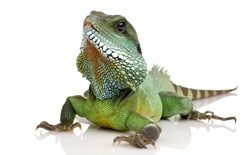
Maintenance: Cleanliness of the enclosure is essential. Waste products should be removed daily and the enclosure should be thoroughly cleaned and disinfected regularly. A 5% bleach solution provides an excellent disinfectant. Be sure to thoroughly rinse the solution from the enclosure before placing the iguana back in. Fresh water should also be offered at all times. Always wash your hands after handling your iguana or any of your iguana\'s cage accessories.